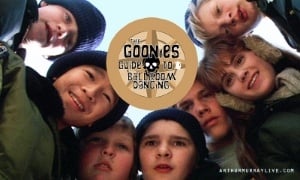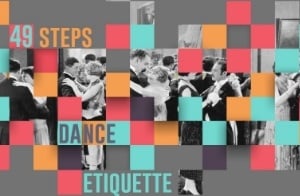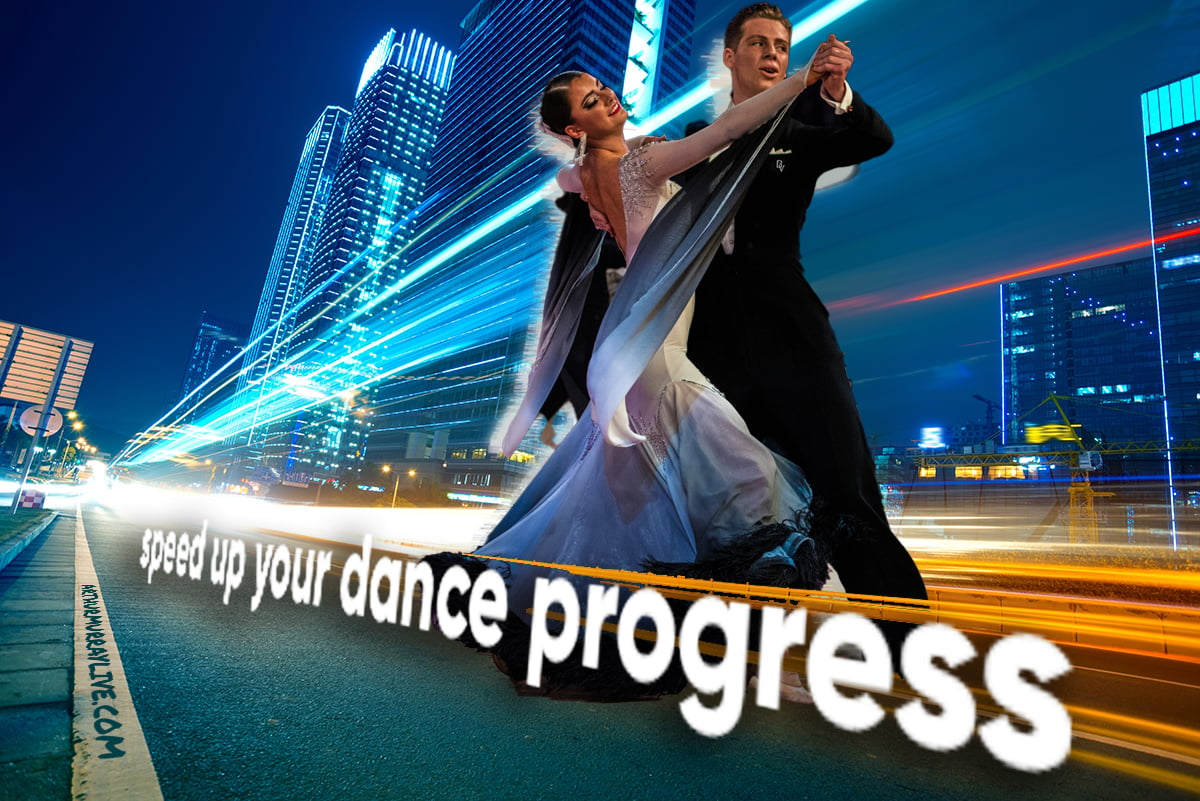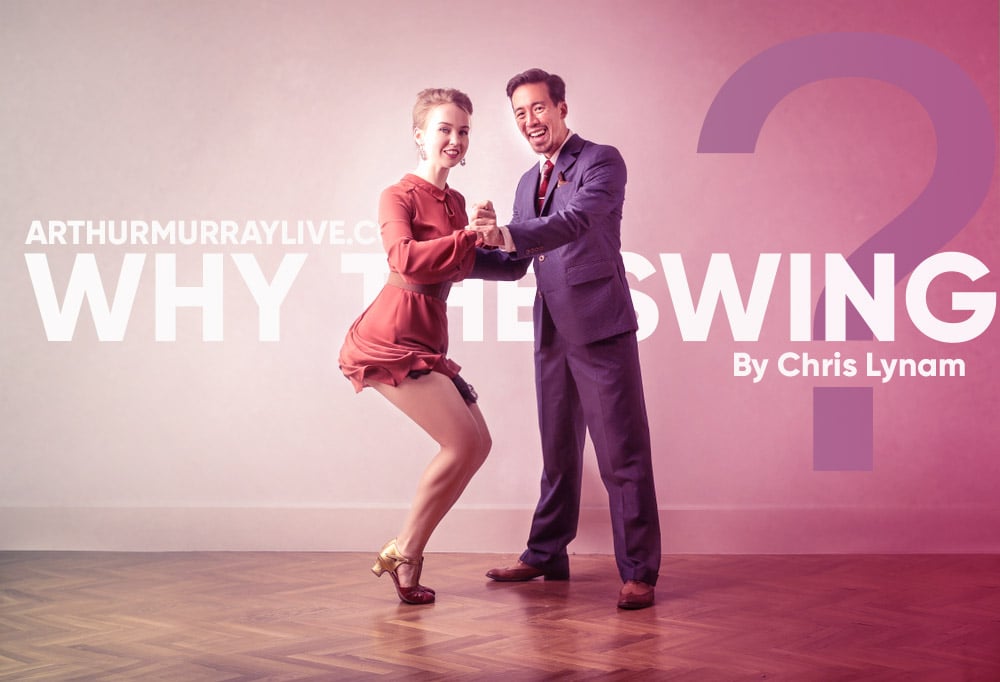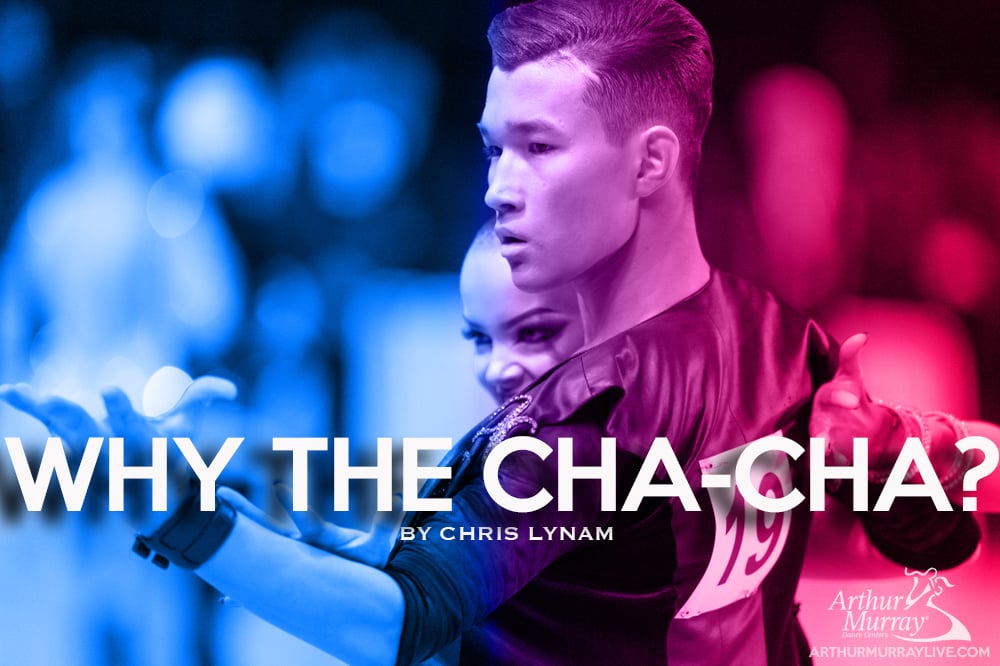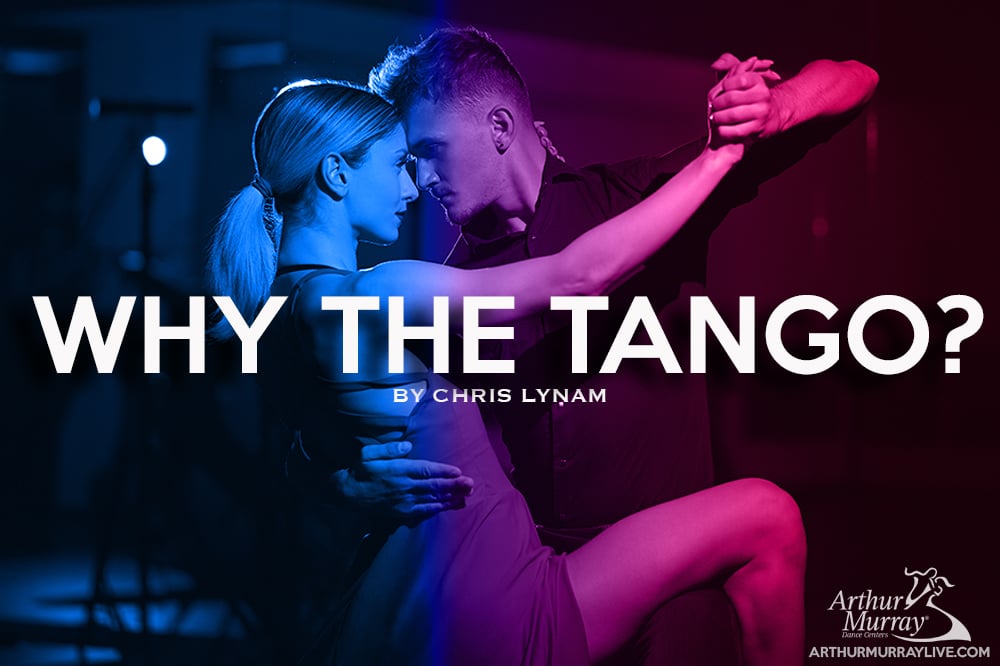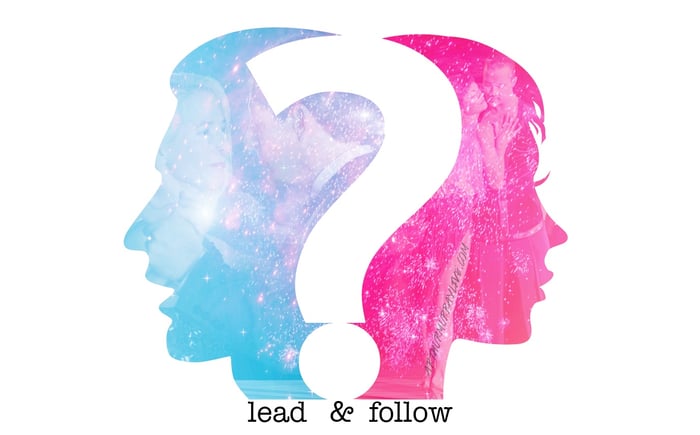
What Is Leading And Following in Ballroom Dancing?
"So what moves do you know?"
"It doesn't matter to me, let's just dance" said the blonde with the vintage swing outfit.
"But do you know the sweetheart?"
"It doesn't matter, just lead me" as her frustration began to show.
The camera zooms in close enough to see the terror on the young swing dancer's face. It's the same look of showing up to class only to realize that there was a research paper due, and it wasn't done. The same look where the blood and oxygen seems to be leaving from someone's body through a vacuum.
It wouldn't take a mind reader to see what this poor young man was thinking.
"Lead you? What does that mean?"
The Basics Of Leading and Following
The Leader - communicates the patterns of a dance through decisive movement
The Follower - is sensitive to the signals of a leader and responds accordingly
Leading and following is the primary ingredient to Social Dancing. It is how a dance couple moves together as a unit without the need of a specific song or choreography. It is even encouraged in Competitive Dancing, as it adds an authentic look to the action and reaction of the partners.
Leader or follower, whichever role you choose to occupy is, quite literally, your job description on the dance floor. What you do with that responsibility will determine who you can dance with.
Important Note: In some cases, leading and following takes a back seat to precise choreography designed for performances. For more on performance and competition dancing, we recommend you read "31 Things Dance Judges Want To See You Do"
Leading And Following Myths in Ballroom Dancing
1. "A Strong Lead"
Being a good leader has nothing to do with physical physique or pressure. A strong lead is a clear lead.
2. Leading in dancing is different from leading in a company meeting.
One is done through the actions of the body, and one is done through verbal communication and PowerPoint.
3. Following is not dependent on "A strong lead" or a "good leader"
A great follower will wait long enough to feel any lead. It's a skill, and it takes training, just like leading.
4. Following is not predictive.
There is no mind reading or code breaking when it comes to becoming a good follower.
5. You need to learn how to lead and follow every single step you learn.
As with most academic or recreational activities, leading and following is built around core fundamentals. It's not a series of highly sophisticated and unique requirements.
3 Tools to Becoming A Better Leader in Ballroom Dancing
1. Utilize two contrasting basic movements
Pairing together East/West patterns, like the Rumba Breaks, and North/South patterns, like the Cuban Walks in Rumba, create the sharp contrast necessary for clear changes in direction.
2. Be willing to make a bold mistake
If your decisiveness was measure by Font size, then a smaller font would require better vision. This means that the less decisive you are, the only people that could follow that movement would be at a higher skill level.

3. Understand That Subtle Differences Are Advanced
The difference between a Swing Step and Magic Step in Foxtrot offers very high contrast. They are, essentially, black and white. However, the difference between the Junior Walk and Grapevine are much more subtle in contrast. This requires a greater degree of definitive movement to pinpoint the difference. A great leader will reserve these dancing "grey areas" for more advanced dancers initially to develop more confidence in the high contrast transitions.
3 Tools to Becoming A Better Follower in Ballroom Dancing
1. Eliminate any dependence you have on Verbal & Visual aids
Asking your partner what they are going to do only enables the leader to take a less effective way out, and limits your ability, in the long run, to follow. It's the equivalent of always looking in the back of the Algebra textbook for the answers. Sensitivity is developed through physical movement, and a carefully constructed set of choices through your Arthur Murray instructor. The more you can limit the amount of visual and verbal cues, the better, and more sensitive you will become as a follower.
 2. Remember This One Slogan
2. Remember This One Slogan
"The lead will feel great, the longer you wait."
That's it.
Your next tattoo has been figured out, now you just need to design the background. In all seriousness, a great follower is, by definition, slightly behind the leader. If you think about it, anytime a follower says "I can't feel his lead" it was probably because they just didn't wait long enough. Sure, there are timid leaders out there, that's how every leader starts, but willing to wait longer and tuning in to a higher physical frequency is what separates average followers from great followers.
 3. Posture and Tone Will Allow You To Do A Lot
3. Posture and Tone Will Allow You To Do A Lot
Standing with great posture, committed to a specific foot, and waiting puts you in prime position to feel where you are going next. It's only when you are standing on both feet (50/50), leaning in a direction, or anticipating that next box step that true "backleading" is revealed.
Key Points to Remember:
Posture: This is your satellite signal. It's the way you receive the data.
Tone: Being committed to a foot and balanced is like the tripod that hold up the antenna.
Note: Gravity can be your enemy if you're trying to become a better follower, so don't leave anything up to it. The better your balance, the more you can move by choice with your partner.
New Ways Of Thinking About Lead and Follow
1. Football: Offense and Defense
Offense: The leader is the quarterback. They've got to be decisive, communicate the plays (their team is all of their limbs), and operate on time with quick decision making as an essential key to success.
Defense: Cannot ask the quarterback which play they are running. The job of the defense is to be as agile and reactive as possible. They cannot predict which direction the play is going to go, but they can put themselves in the best possible position to read and react to the direction of the play.
2. Conversations: Speaking and Listening
Speaking: The leader is the speaker. They need to be clear, audible, and concise. If their signals are the public speaking equivalent of a presenter without a microphone, then only superheroes with ultrasonic hearing can determine the message.
Listening: You know how cute it is when couples finish each other's sentences? Well, depending on the conversation, it can also be a huge red flag that you aren't listening. A follower is an expert listener. They don't predict the outcome of the conversation, they take it all in, wait, and respond.
3. Limousine: Driver and Passenger
Driver: A driver will rarely be recognized for their parallel parking prowess, but they can easily get recognized for failing to deliver their passenger to the airport on time. Being a leader means that there are a lot of factors to think of, but that shouldn't be the responsibility of the celebrity passenger behind the privacy glass.
Passenger: They say the leader is the frame, and the follower is the picture. In this comparison, the follower is a celebrity passenger. As the celebrity in the back you have no interest in what happens behind the steering wheel, as long as the bumps are at a minimum, and you arrive on time.
Learning To Lead and Follow
The most essential ingredient for ballroom and latin dancing is, without question, leading and following. This ranks higher than arm styling, hip motion, and yes, even spray tanning. The real trick, is understanding how to get your body to acquire it.
If this were golf, it would be your full swing.
If this were a foreign language, this would be working on conversation.
If this were Drivers Education, this would be the behind the wheel portion.
As important as all of these stages are to these activities, there's one common ingredient: They can't be done alone.
There is a neverending supply of dance patterns floating throughout the internet, but there is one unfortunate detail - you can't learn to lead and follow by watching a video. We cover this in greater detail with the article "The Truth About Dance Videos". Just like a golf magazine can't teach you to swing better, a textbook can't improve the way a foreign language sounds, and the drivers manual can't actually teach you to become a driver.
To truly learn this the right way, the first time - work with a professional.
At Arthur Murray, each of the professional dance instructors are trained in the latest methods to teach you how to lead and follow on the dance floor in a fun, quick, and easy way. Read more about the History of Arthur Murray here.
Final Thought
That young swing dancer didn't lack for dance patterns.
Unfortunately, he only learned to dance in group classes, with one partner, and with no clear understanding what leading really was. Dancing fluently with any partner wasn't an option for him at that stage. Sometimes it takes tough moment to learn what's important. Sometimes it needs to be scary, rattling, embarrassing, and that sudden realization that you forgot to pack some important equipment... with an extreme close up.
The good thing is that eventually, with training, you can heal from it.
Just make sure you write a blog about it... like I did.
Whether learning how to dance is something you've put off for far too long, or you're just stuck in a rut with your leading or following - everything will make more sense when you step in for a consultation appointment with one of our certified Arthur Murray instructors.






